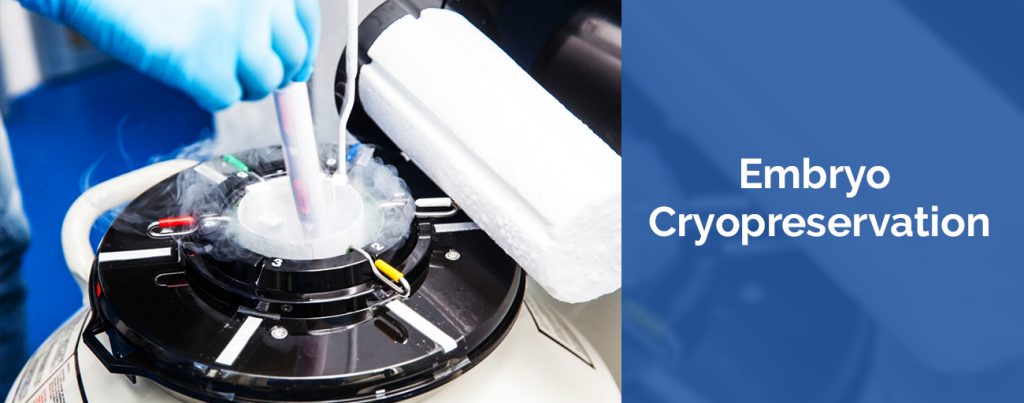Embryo Cryopreservation
Cryopreservation of embryos is the process of preserving an embryo at sub-zero temperatures, generally at an embryogenesis stage corresponding to pre-implantation, that is, from fertilisation to the blastocyst stage.
Indications
Embryo cryopreservation is useful for leftover embryos after a cycle of in vitro fertilisation, as patients who fail to conceive may become pregnant using such embryos without having to go through a full IVF cycle. Or, if pregnancy occurred, they could return later for another pregnancy. Spare oocytes or embryos resulting from fertility treatments may be used for oocyte donation or embryo donation to another woman or couple, and embryos may be created, frozen and stored specifically for transfer and donation by using donor eggs and sperm.
Method
Embryo crypreservation is generally performed as a component of in vitro fertilization (which generally also includes ovarian hyperstimulation, egg retrieval and embryo transfer).
The main techniques used for embryo cryopreservation are vitrification versus slow programmable freezing (SPF). Studies indicate that vitrification is superior or equal to SPF in terms of survival and implantation rates.
Pregnancy outcome
In current state of the art, early embryos having undergone cryopreservation implant at the same rate as equivalent fresh counterparts.[1] The outcome from using cryopreserved embryos has uniformly been positive with no increase in birth defects or development abnormalities,[3] also between fresh versus frozen eggs used for intracytoplasmic sperm injection (ICSI)

